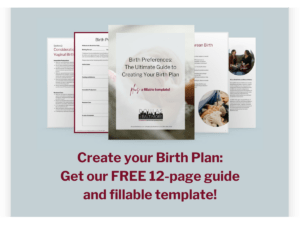Two things can happen as you get closer to your baby’s arrival date. You feel the urge to nest, or prepare your home for the new baby. You might set up the nursery or clean the house. You also might feel overwhelmed and anxious about getting everything done. Here is an overview of four ways you can prepare for baby’s arrival.
Set Up Your Home
The first thing that new parents usually think about is where baby is going to sleep. The American Academy of Pediatrics recommends that babies “room in,” (https://www.healthychildren.org/English/ages-stages/baby/sleep/Pages/A-Parents-Guide-to-Safe-Sleep.aspx) or sleep in the same room as parents, for the first 6 months. Make sure that the crib or bassinet is away from windows, heavy shelves, and electrical cords. Other things you might want in the nursery or in your bedroom are a diaper changing table, chair for feeding, a dresser for clothing, and places to store extra diapers and toys. Consider buying natural or greenguard items to prevent off-gassing, or buy them used or well in advance of baby’s arrival.
Get the Gadgets
Some gadgets aren’t really gadgets at all: they are necessary tools. For example, you can’t leave the hospital without a proper car seat. Many new parents opt for car seat/stroller combos, where the carrier snaps into the car seat or the stroller, for a variety of functions.
Additionally, a baby carrier or babywearing device can be worth its weight in gold. Babies are soothed by being nestled close, while parents enjoy having their hands and arms free. Slings, wraps, and packlike/structured carriers are all great options. Often families will opt to have a couple carriers to choose from depending on who is wearing the baby and whether they are on for a walk (or other outdoor activity) or if they are trying to get chores done around the house. Check out this list of babywearing devices.
Another popular product we’ve seen lately is the Snoo smart bassinet. Many new parents swear by their effectiveness. So much so that some employers (like Under Armour) are taking notice and now provide a 6 month rental Snoo bassinet for their employees. The bassinet responds to a baby’s cries with swaddling, shushing, and swaying (part of the 5S theory). It does this by rocking and playing white noise to soothe the baby. It also ensures that babies sleep on their backs with a special sleep sack.
Clinical Decisions to Consider
Less exciting than preparing the nursery or getting everything ready, but just as important, are the clinical decisions to consider before baby arrives. While you’ve been working with a doula and midwife and/or an obstetrician, once baby is born, they’ll need a pediatrician. Ask your healthcare provider for recommendations and get a pediatric care provider. Similarly, begin thinking about childcare providers. While you may have time off from work, consider who will take care of baby when you head back to work. Lastly, consider options available at the hospital for your newborn such as cord blood donation or delaying cord clamping, erythromycin eye ointment, vitamin K injection, and circumcision.
Take Care of Yourself
In the excitement and nervousness you may experience before bringing baby home, it’s easy to forget to take care of yourself. You can take time to appreciate your friendships, your romantic relationship, or your relationship with your other children through special trips or outings. And make sure to get adequate nutrition and rest – things that might be in short supply in the coming months.
You can learn more about how to prepare for baby’s arrival through our Baby 101: The 4th Trimester, Birth Basics or Complete Childbirth Education classes. Click here to learn more.


